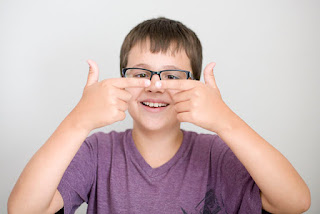Retinal Disparity Definition, Psychology, Example, Depth Perception
Retinal disparity is a pathological condition related to eyes. In this conditions, the patient is not able to see the same angle of a thing with both eyes. There is a difference in the vision of both eyes. Basically retinal disparity is a space between both the eyes which create wrong perception about depth of an object. Both eyes converge on the same object but the object's image obtained is not same in both eyes. The object's angle is different in both eyes due to retinal disparity. It is also known as binocular cue. It is called binocular instead of monocular because both eyes are involved.
The psychology behind retinal disparity is not simple but a bit difficult to understand. Basically in retinal disparity, the brain tries to connect both the images obtained from both right and left sided eye. A seamless view is obtained after merging both images. In psychological point of view, retinal disparity is a condition in which there is difference in angle of images obtained in both eyes. This condition is important for depth perception. Retinal disparity is closely related to brain and is sometimes considered a psychological issue instead of visual issue.

A simplest example which can explain retinal disparity is discussed below:
A person is asked to sit on a chair and a box is placed in front of him. Person is asked to look at the box placed straight. Both of his eyes will capture the image which will differ from each other. The box will be straight on looking with left sided eye and the same box will be at a specific angle (not straight) on looking with right sided eye. When brain merges both the images, then person can easily see 2 sides of the box.
Depth perception is the ability of our vision to perceive different angles (three different angles) of an object. Depth perception is also important to get an estimation about how far the object is placed. Depth perception is perfect if binocular cue is involved. Monocular cue does not create exact perception about an object. The depth perception is impaired in monocular cue. The perfect example of impaired depth perception is a blind man from one eye have impaired depth perception. But the depth perception is still functional if single eye is involved i.e. monocular cue.
Convergence is the movement of eyes towards inside. Whenever a person tries to focus on an object the eyes move inward to converge an object. The eyes of person look striaght whenever an object is placed far from him. But the eyes converge and moves inward when the object is placed near person. Convergence is important in retinal disparity. The apparent position of an object differs in both eyes in retinal disparity. Convergence enables the person to estimate about the distance at which an object is placed and retinal disparity gives information about the depth and size of an object.
Retinal Disparity Psychology
The psychology behind retinal disparity is not simple but a bit difficult to understand. Basically in retinal disparity, the brain tries to connect both the images obtained from both right and left sided eye. A seamless view is obtained after merging both images. In psychological point of view, retinal disparity is a condition in which there is difference in angle of images obtained in both eyes. This condition is important for depth perception. Retinal disparity is closely related to brain and is sometimes considered a psychological issue instead of visual issue.

Retinal Disparity Example
A simplest example which can explain retinal disparity is discussed below:
A person is asked to sit on a chair and a box is placed in front of him. Person is asked to look at the box placed straight. Both of his eyes will capture the image which will differ from each other. The box will be straight on looking with left sided eye and the same box will be at a specific angle (not straight) on looking with right sided eye. When brain merges both the images, then person can easily see 2 sides of the box.
Retinal Disparity depth Perception
Depth perception is the ability of our vision to perceive different angles (three different angles) of an object. Depth perception is also important to get an estimation about how far the object is placed. Depth perception is perfect if binocular cue is involved. Monocular cue does not create exact perception about an object. The depth perception is impaired in monocular cue. The perfect example of impaired depth perception is a blind man from one eye have impaired depth perception. But the depth perception is still functional if single eye is involved i.e. monocular cue.
Retinal Disparity and Convergence
Convergence is the movement of eyes towards inside. Whenever a person tries to focus on an object the eyes move inward to converge an object. The eyes of person look striaght whenever an object is placed far from him. But the eyes converge and moves inward when the object is placed near person. Convergence is important in retinal disparity. The apparent position of an object differs in both eyes in retinal disparity. Convergence enables the person to estimate about the distance at which an object is placed and retinal disparity gives information about the depth and size of an object.
Retinal Disparity Definition, Psychology, Example, Depth Perception
 Reviewed by Simon Albert
on
January 25, 2019
Rating:
Reviewed by Simon Albert
on
January 25, 2019
Rating:
 Reviewed by Simon Albert
on
January 25, 2019
Rating:
Reviewed by Simon Albert
on
January 25, 2019
Rating:











